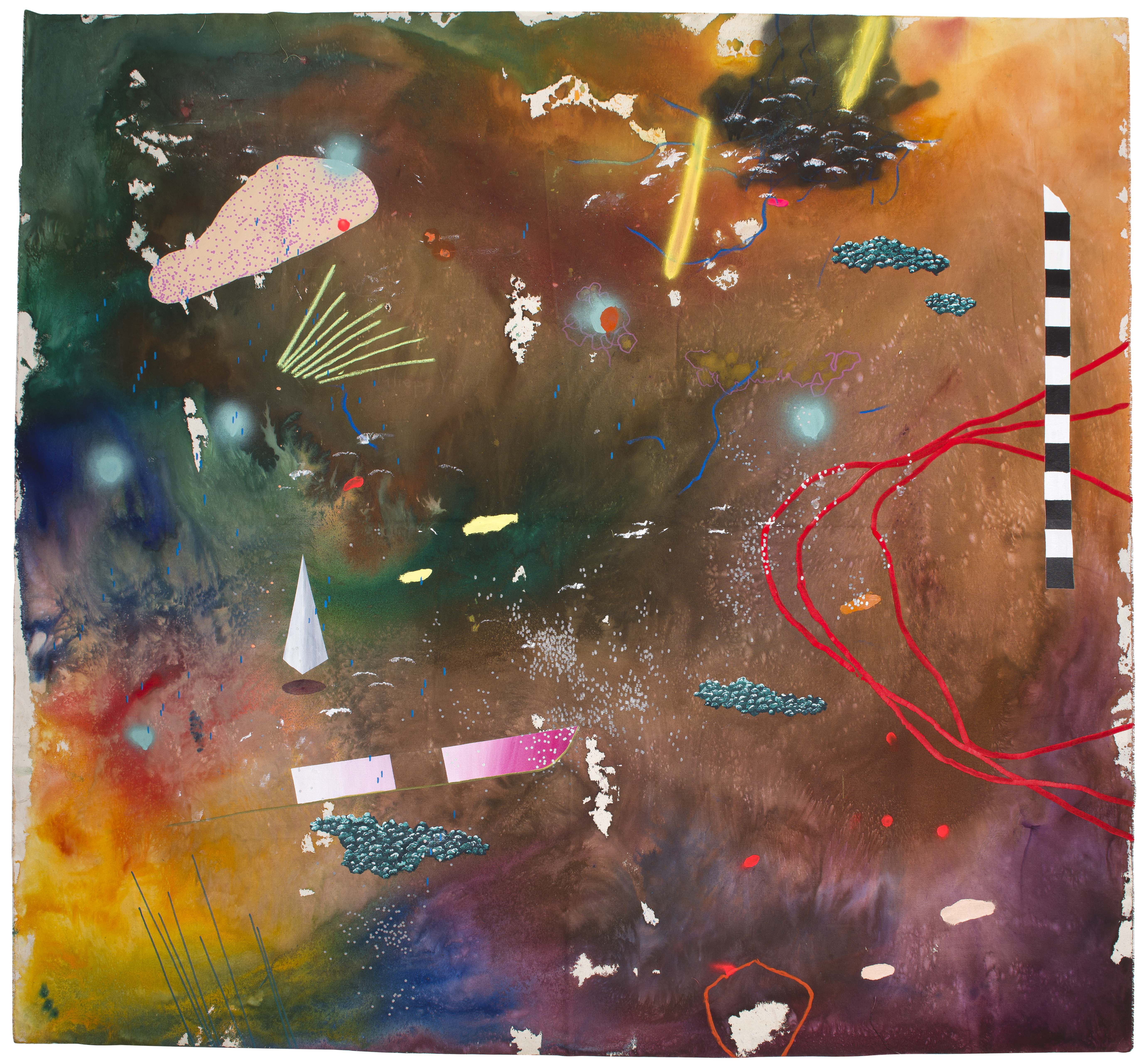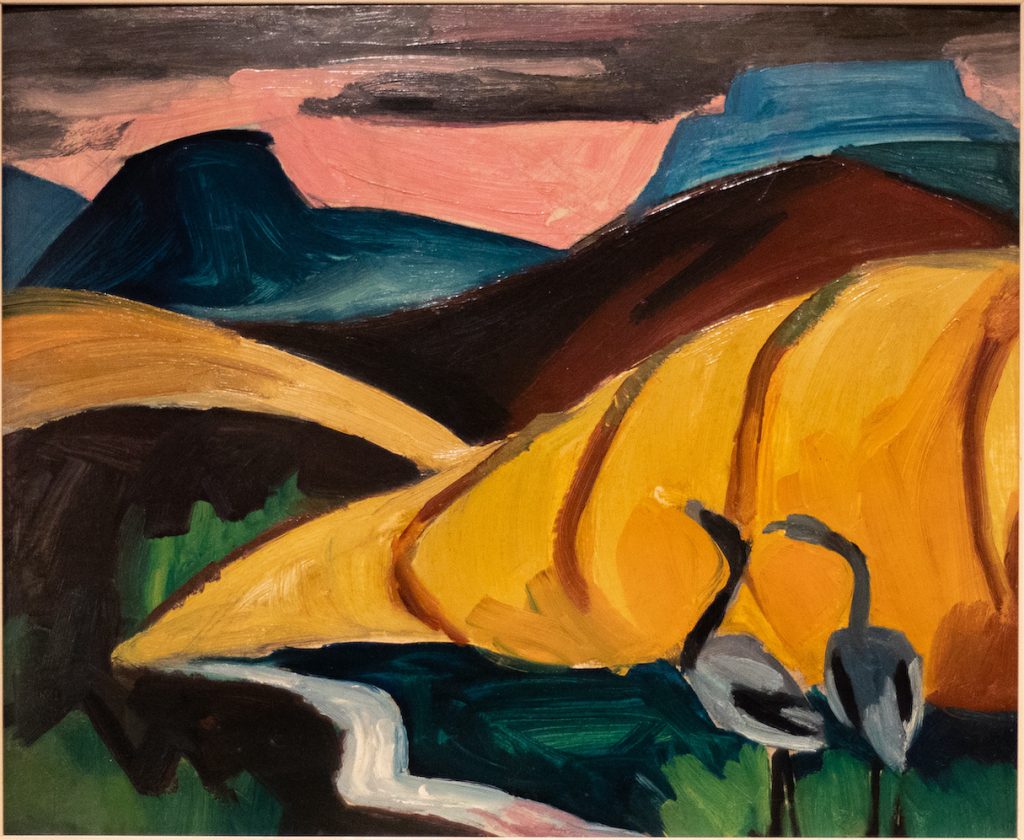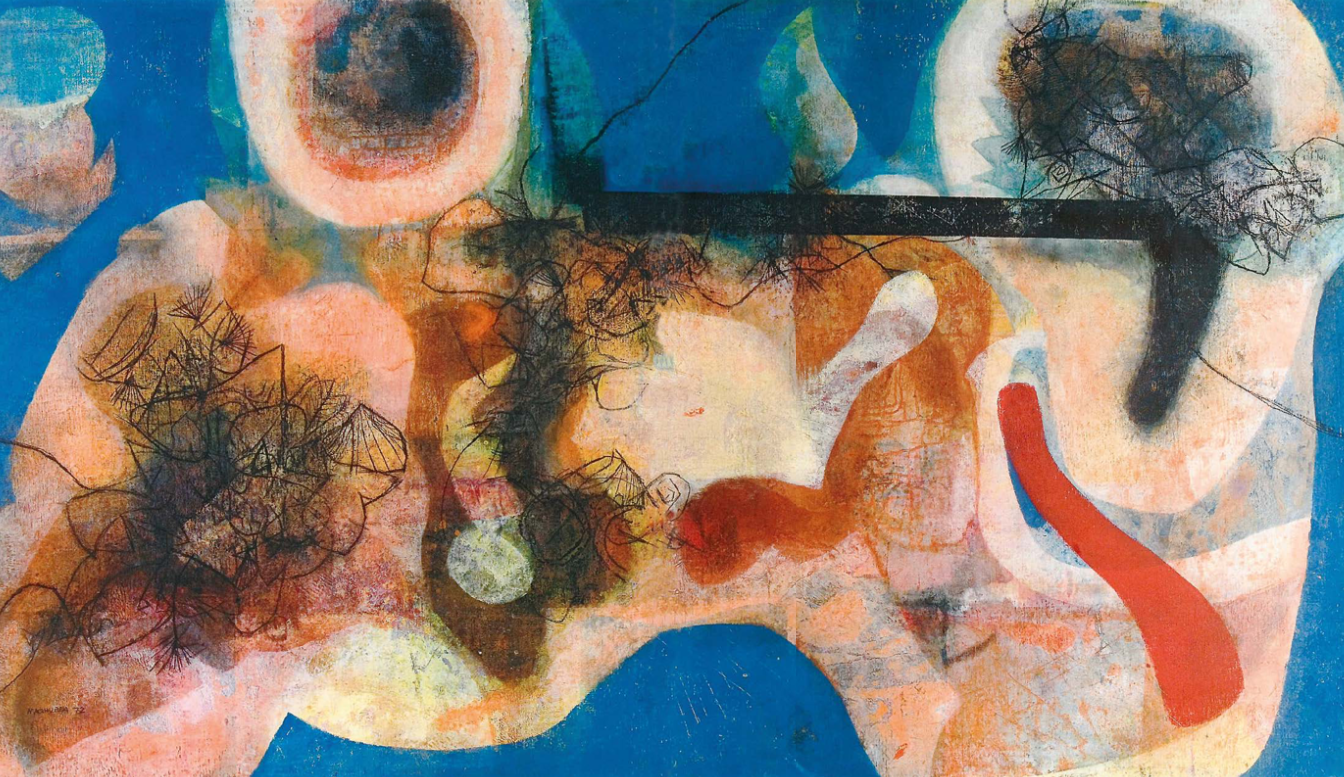The Auction Market: Where Culture and Commerce Converge
- by Nkgopoleng Moloi
---------------
The art market, with its intricate dynamics, allows for convergence between creativity and commerce. Artists and collectors, often mediated by dealers, bring forth their passions, as well as emotional and financial motives. These nuanced and complex motivations can make it difficult to untangle why and how art is bought and sold.
 Mongezi Ncaphayi, Taleip, Yay!!!, 2024, Mixed media on canvas, 175.5 x 183 cm (unstretched), currently on auction with Strauss & Co - bid here
Mongezi Ncaphayi, Taleip, Yay!!!, 2024, Mixed media on canvas, 175.5 x 183 cm (unstretched), currently on auction with Strauss & Co - bid here
Because of challenges posed by economic uncertainties, artists continuously seek new avenues for engagement as well as ways to participate broadly and firmly in the art market. Art is seen as a viable asset class by many collectors, due to its potential for long-term growth and diversification. For these reasons, the conversation around viable avenues for exchange is a relevant one. Auction houses that make up the secondary market play a pivotal role in facilitating exchange, while also potentially shaping the trajectory of artists' careers by determining the value of artworks. Alastair Meredith, Senior Art Specialist and Auctioneer at Strauss & Co. shares some of the simple and complex reasons why the secondary market exists; “The reality is people sell artworks for many different reasons, many of which are straightforward. Whether they’re downsizing, selling work they've inherited it and are not particularly interested in, or have simply fall out of love with a particular work, they might liquidate parts of their collection. And of course, there are many buyers and collectors in South Africa that take work to market because it's part of their investment portfolio. Auction houses like Strauss & Co. offer a transparent and simple platform to trade artworks.”
Until recently, I was intimidated by auction houses, for various reasions ranging from negative connotations around flipping (where clients buy work only to auction them off in different markets to chase profits) to opacity around the bidding process as well as questions around the secondary market’s impact on the value of artworks, particularly for living artists. Now, some of these fears are balanced by an understanding of auctions as a potential means for artists to gain exposure, connect with potential buyers, and establish a market value for their works.
 Louis Maqhubela, Composition with a bicycle, 1970. Private collection.
Louis Maqhubela, Composition with a bicycle, 1970. Private collection.
I’ve also had to pause and reflect on my limited interaction with auction houses in South Africa. The first time I made the connection between two wonderful modern masters, Louis Maqhubela and Douglas Portway, was at the RMB Turbine Art Fair in 2019 through the exhibition, “A Meeting of Minds: Louis Maqhubela and Douglas Portway,” which was presented by Strauss & Co. The exhibition attempted to examine the intersection of the work of Maqhubela and Portway, in relation to their art training, early influences, and how their styles developed. This was the third in a series of museum-quality exhibitions staged by Strauss, including JH Pierneef (in 2017) and Irma Stern (in 2018), followed by one of my favourite two-person exhibitions of all time, devoted to Gladys Mgudlandlu and Maggie Laubser. These interventions were important moments for me to critically consider the convergence between curatorial rigour and sales, at a large scale. Through that auction, 32 lots of Mgudlandlu’s works were sold for a combined value of 1.6 million ZAR while Laubser’s sales totalled 94 million ZAR (77% of the lots sold). These results — influenced by an art market that is inherently cyclical and influenced by economic conditions, global events, trends as well as continued inequality, erasure and racialisation — point to both successes and failures of the secondary art market. This of course points to the growing need for diversity and inclusivity that will lead to the recognition of underrepresented artists and increased financial stability for living artists.
While I may view the secondary market with scepticism, I’m also aware of the tangible benefits including increased visibility, validation (this too we can complicate), and potential financial returns. By leveraging platforms like auctions, artists can amplify their voices, expand their audiences, and forge meaningful connections within the art market. The resale of artworks on the secondary market can enhance an artist's reputation and contribute to the narrative surrounding their body of work. By tracking auction results and market trends, younger artists can gain insights into the demand for their art and make informed decisions about their career trajectory. Auctions that offer extensive work can be a good place to connect artworks throughout historical periods. From iconic works by renowned artists canonised through time to contemporary pieces by emerging talents, auctions often showcase a breadth of styles, themes, and perspectives, particularly when these span geographies in terms of countries and regions represented through the artworks. That being said, unlike presentations staged in the primary market through gallery exhibitions and art fairs, there can be some criticism around the absence of a cohesive narrative that contextualises art objects.
 Maggie Laubser, Landscape with mountains and two birds, South Africa, 1924-28. Courtesy of the Stellenbosch University Collection.
Maggie Laubser, Landscape with mountains and two birds, South Africa, 1924-28. Courtesy of the Stellenbosch University Collection.
For new collectors seeking to navigate the auction scene (particularly those that start at accessible price points), understanding the mechanics of bidding and the avenues for participation is essential. Whether through online bidding, live auctions, or absentee bids (a method of bidding for those who cannot or do not wish to attend an auction), it is possible to engage with auctions in ways that align with one’s comfort levels.
While secondary sales present opportunities, like any market, they also harbour complexities, especially when approached irresponsibly. Meredith tells me that pricing requires careful consideration, taking into account factors such as auction precedent, market demand, and the artist's overall trajectory. He emphasises that collaboration with galleries and industry professionals can help artists navigate these considerations and ensure their works are priced appropriately; “Pricing artworks on the secondary market is a skill in itself, as it needs to take many factors into account, both regarding the broader market and the artist's particular situation. And artists, or works of art by artists that still have a gallery presence can be particularly tricky to value for the secondary market.” In cases where competitive bidding processes drive prices beyond initial estimates, this can signal strong demand and increase the perceived value of the artwork. For emerging artists, this can be beneficial if it is used as a benchmark for pricing future work and builds credibility within the art market. It can also be used as a tool for negotiating with galleries or potential buyers, providing tangible evidence of their market.
Embracing transparency and collaboration between dealers, artists and auctioneers can empower artists to navigate the complexities of the market while preserving the integrity of their creative practice. Through responsible dealings and interactions, secondary markets can serve as dynamic spaces, where artists, collectors, and enthusiasts can converge around culture through commerce.
 Louis Maqhubela, Untitled, Courtesy of Wits Art Museum
Louis Maqhubela, Untitled, Courtesy of Wits Art Museum
Further Reading In Articles
African Artist Directory















